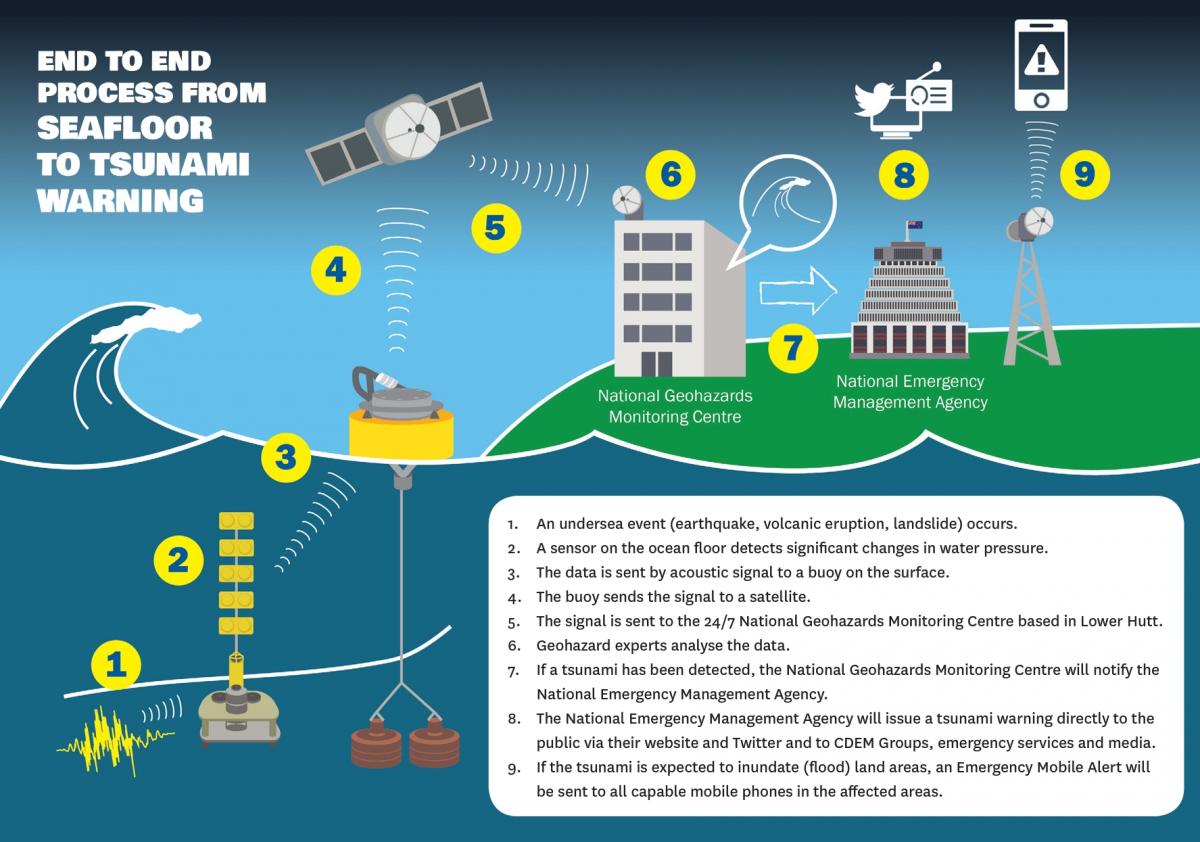You can contact LEARNZ, part of CORE Education, at:
Postal Address:
PO Box 13 678,
Christchurch 8141,
New Zealand

To better understand tsunami and the risk for Aotearoa New Zealand scientists work on;
DART (Deep-ocean Assessment and Reporting of Tsunami) sensors are deep-ocean instruments that monitor changes in sea level. They are currently the only accurate way to rapidly confirm a tsunami has been generated before it reaches the coast.

For warnings of tsunami from distant sources, GeoNet monitors global earthquake data and data from a network of coastal tide stations and deep ocean sensors. If a tsunami is detected, they support Civil Defence to issue tsunami warnings in Aotearoa New Zealand. Depending on the size of the expected tsunami the public are alerted via any or all of Emergency Mobile Alerts, radio and television broadcasts, internet apps, social media, websites, phone text alerts and electronic highway notice boards.
Tsunami from major earthquakes off South America may take 12 hours or more to reach the New Zealand mainland, giving authorities time to prepare and if necessary, evacuate coastal settlements.

 For a local source tsunami, which could arrive in minutes, there won’t be time for an official warning. It is important to recognise the natural warning signs and act quickly. If you are near a shore and experience any of the following, take action. Do not wait for official warnings when you:
For a local source tsunami, which could arrive in minutes, there won’t be time for an official warning. It is important to recognise the natural warning signs and act quickly. If you are near a shore and experience any of the following, take action. Do not wait for official warnings when you:
As soon as the shaking stops, move immediately to the nearest high ground, out of all tsunami evacuation zones, or as far inland as you can.
Remember: Long or Strong, Get Gone!
Complete the Tsunami Monitoring and Research quiz >
Discover more about tsunami >